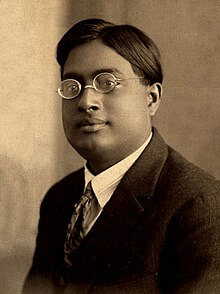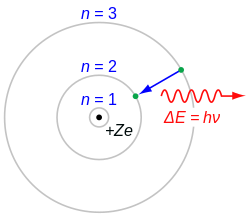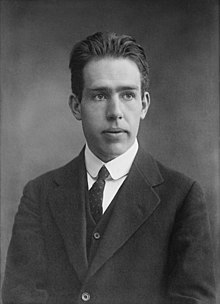Planet Earth/3b. Atoms: Electrons, Protons and Neutrons
Planck’s length, the fabric of the universe, and extreme forms of matter
[edit | edit source]What would happen to water (H2O) if you subjected it to the absolute zero temperature predicted by Lord Kelvin, of 0 Kelvin or −273.15° Celsius and under a complete vacuum of 0 Pascals of pressure? What would happen to water (H2O) if you subjected it to extremely high temperatures and pressures, like those found in the cores of the densest stars in the universe?
Such answers to these questions may seem beyond the limits of practical experimentation, but new research is discovering new states of matter at these limits. These additional states of matter exist at the extreme end of all phase diagrams; at the limits of observable temperature and pressure. It is here in the corners of phase diagrams that matter behaves in strangely weird ways. However, these new forms of matter were predicted nearly a century before it was discovered by a unique collaboration between two scientists living on different sides of the Earth.

As the eldest boy in a large family with seven younger sisters, Satyendra Nath Bose grew up in the bustling city of Calcutta, India. His family was well off, as his father was a railway engineer and a member of the upper-class Hindu society that lived in the Bengal Presidency. Bose showed an aptitude for mathematics, and rose up the ranks as a teacher and later became a professor at University of Dhaka, where he taught physics. Bose read Albert Einstein’s papers and translated his writings from English to Hindi, and started a correspondence with Albert Einstein. While lecturing his class in India on Planck’s constant and black body radiators, he stumbled upon a unique realization, a statistical mathematical mistake that Einstein had made in describing the nature of the interaction between atoms and photons (electromagnetic radiation).
As you might recall Planck’s Constant relates to how light or energy striking matter is absorbed or radiates in a perfect black body radiator. In 1900, Max Planck used his constant (), and calculated a minimum distance between wavelengths of photons possible for electromagnetic radiation. The equation is
where ℏ is the reduced Planck’s constant (h) which is equal to 1.054571817x 10-34 Joules Second or ℏ and equals h divided by 2π. G is Henry Cavendish’s calculation for gravity G= 6.67408x10−11 Meters3/Kilograms Seconds2, and c is the speed of light in a vacuum, 299,792,458 Meters per Second.
This length is called Planck’s length. It is the theoretical smallest distance between wavelengths of the highest energy electromagnetic radiation possible. It also relates to the theoretical smallest distance between electrons within an atom. The current calculated Planck’s length is 1.6 x 10-35 meters which is incredibly small, as the decimal place has 35 zeros in front of it, or is 0.000000000000000000000000000000000016 meters long.
Bohr’s Model of the Atom
[edit | edit source]In physics it is the smallest measurement of distance. Satyendra Nath Bose was also aware of a new model of the atom, proposed by Niels Bohr a Danish scientist, who viewed atoms similar to how the solar system is arranged, with planets orbiting around stars, but instead of planets, tiny electrons orbiting around the atom’s nucleus. Under Bohr’s model of the atom, the simplest type of atom (hydrogen) is a single electron orbiting around a nucleus composed of a single proton.


Electron Orbital Shells
[edit | edit source]Experiments in fluorescence demonstrates that when electromagnetic radiation, such as light is absorbed by atoms, the electrons rise to a higher energy state. They subsequently fall back down to a natural energy state and release energy as photons. This is why materials glow when heated and why radioactive materials glow when subjected to gamma or x-ray electromagnetic radiation. Scientists can measure the amount of energy released as photons when this occurs, and Niels Bohr suggested that the amount of energy released appeared to be related to orbital shell distances, at tiny units measured in Planck’s lengths. Niels Bohr developed a model explaining how each orbital shell appeared to hold increasing numbers of electrons, with an increasing number of protons.
One way to think of these electron orbital shells is that they are like notches along a ruler. Electrons must encircle each atom’s nucleus from one or more of those discrete notches, which are separated by distances measured in Planck’s lengths, the smallest measurement of distance theoretically possible. To test this idea, scientists excited atoms with high energy light, and measured the amount of electromagnetic radiation that was emitted by the atoms. When electrons absorb light they move up the notches by discrete Planck lengths, however they also would move back down a notch and release photons, emitting in the process electromagnetic radiation, until they settle on a notch that is supported by an equal number of protons in the nucleus.

This effect is called the photoelectric effect. Albert Einstein earned his Nobel prize in 1921 by showing that it was the frequency of electromagnetic radiation that excites electrons by a factor of Planck’s constant in determining energy output.
Such, that E = hv, where E is the energy measured in Joules, h is Planck’s constant, and v is the frequency of the electromagnetic radiation. We can use v = c / λ, where c is the speed of light, and λ is the wavelength to determine v for the frequency of the different light wave lengths, finding that the shorter the wavelength, the higher the amount of energy.
As electrons move up the notches away from the nucleus by absorbing more electromagnetic radiation they can eventually become so excited that they can become completely free of the nucleus all together and become free electrons (electricity). This happens especially with metal materials that have a looser connection with orbiting electrons, but can theoretically happen with any type of material, given enough electromagnetic radiation subjected to the matter. This is what happens to matter when it is heated, the electrons move upward in their energy states, causing the atoms to jiggle which is subjected to the surrounding particles as electromagnetic radiation, their electromagnetic energy expands. This is why there is an overall trend with increasing temperatures and decreasing pressures toward matter that is less dense, expanding in volume from a solid to a liquid to a gas, eventually with enough energy the electrons become freed from the nucleus and result in plasma of free-flowing electrons or electricity.

These notches that the electrons encircle the nucleus are focused upon certain orbital shells of stability, such that the number of electrons exactly match the number of protons within the nucleus and fill orbital shells in a sequential order. The orbital shells of stability form the organization of the Periodic Table of Elements that you see in many classrooms.
One way to think of these orbital shells of stability is as discrete notches on a ruler, each “centimeter” on this ruler representing an orbital distance in the electron shell. There can be smaller units such as millimeters, with the smallest unit measured in Planck lengths. Scientists were eager to measure these tiny distances within atoms, but found it impossible, because the electrons behave not like planets orbiting a sun, but as oscillating waves forming a probability function around each of those discrete distances of stability. Hence it is impossible to predict the exact location of an electron along these notched distances from the nucleus. This is known as the Heisenberg Uncertainty Principle, which states that the position and the velocity of an electron cannot both be measured exactly at the same time. In a sense this makes sense. Electrons like photons encircle the nucleus traveling at the speed of light and as oscillating waves, making it impossible to measure a specific position of an electron within its orbit around the nucleus. The study of atomic structures, such as this is called quantum physics.
Satyendra Nath Bose had read Einstein’s work on the subject, and noted some mathematical mistakes in Einstein’s calculations of the photoelectric effect. Bose offered a new solution, and ask Einstein to translate the work into German for publication. Einstein generously agreed and Bose’s paper was published. Einstein and Bose took this new solution to the question of what happens to these electron orbitals when atoms are subjected to Lord Kelvin’s extremely low temperature of absolute zero.
Einstein, following Bose, proposed that the electron orbital distances would collapse, moving down to the lowest possible notch on the Planck scale. This tiny distance prevents the atom from collapsing, and is referred to as zero-point energy. What is so strange, is that all atoms no matter how many protons or electrons it contains, will result in a similar collapse of the electrons down to the lowest notch at these extremely low temperatures.
At this point the atoms become a new state of matter called Bose-Einstein condensate. Bose-Einstein condensate has some weird proprieties. First is that it is a superconductor, because electrons are weakly held to the nucleus, second all elements except helium become solids, and the strangest propriety, all atoms in this state will exhibit the same chemical properties since the electrons are so close to the nucleus and they occupy the lowest orbital shell.
Helium, which is a gas at normal room temperatures and pressures, has two protons and two electrons. When it is cooled to absolute zero in a vacuum, it remains in liquid form, rather than the denser solid, like all other elements, and only when additional pressure is added does helium eventually turn into a solid. It is the only element to do this, all others become solids at absolute zero temperatures. This is because the zero-point energy in the electron orbitals is enough to keep helium as a liquid even at temperatures approaching absolute zero. In 1995 two scientists at the University of Colorado Eric Cornell and Carl Wieman super cooled rubidium-87, generating the first evidence of Bose-Einstein condensate in a lab, which earned them a Nobel prize in 2001. Since then numerous other labs have been experimenting with Bose-Einstein condensate, pushing electrons within a hair’s breadth away from the nucleus.
What happens to atoms when subjected to intense heat and pressure? Well electrons will move up these notches until they become far enough from the nucleus that they leave the atom and become a plasma, a flow of free electrons. Hence the first thing that happens at high pressure and high temperature is the generation of electricity from the free flow of these electrons. If pressure and temperature continue to increase, the protons will convert to neutrons, releasing photons as gamma radiation and neutrinos. This nuclear fusion is what generates the energy inside the cores of stars, such as the sun. If neutrons are subjected to even more pressure and temperature, they form black holes, the most mysterious form of matter in the universe.
One of the frontiers of science is the linkage between the extremely small Planck’s length and the observed cosmic expansion of the universe as determined by Hubble’s constant. One way to describe this relationship is to imagine a fabric to matter, which is being stretched apart (expanding) at the individual atomic level resulting in an expanding universe. The study of this aspect of science is called cosmology.
The Atom
[edit | edit source]Electrons
[edit | edit source]In chemistry, the electrons are often considered the most important aspect of the atom, because they determine how atoms bond together to form molecules. However, electrons can move around between atoms, and even form plasma. Maybe of more importance in chemistry is the number of protons within the nucleus of the atom.
Protons
[edit | edit source]
The number of protons within an atom determines the names of the elements. Such that all atoms with 1 proton are called hydrogen, atoms with 2 protons are called helium, while 3 proton atoms are called lithium. The number of protons in an atom is referred to as the Atomic Number (Z). Each element is classified by its atomic number, which appears in the top corner of a periodic table of elements, along with the chemical symbol of each element. The first 26 elements formed during fusion in the earlier proto-sun while the elements with atomic numbers higher than 26 formed during the supernova event and elements higher than 94 are not found in nature and must be synthesized in labs. Here is a list of elements listing the atomic number and name of the element, as of 2020.
Elements formed in the sun through fusion
- 1-Hydrogen (H)
- 2-Helium (He)
- 3-Lithium (Li)
- 4-Beryllium (Be)
- 5-Boron (B)
- 6-Carbon (C)
- 7-Nitrogen (N)
- 8-Oxygen (O)
Elements formed in the larger proto-sun through fusion
- 9-Fluorine (F)
- 10-Neon (Ne)
- 11-Sodium (Na)
- 12-Magnesium (Mg)
- 13-Aluminium (Al)
- 14-Silicon (Si)
- 15-Phosphorus (P)
- 16-Sulfur (S)
- 17-Chlorine (Cl)
- 18-Argon (Ar)
- 19-Potassium (K)
- 20-Calcium (Ca)
- 21-Scandium (Sc)
- 22-Titanium (Ti)
- 23-Vanadium (V)
- 24-Chromium (Cr)
- 25-Manganese (Mn)
- 26-Iron (Fe)
Elements formed from the Supernova Event
- 27-Cobalt (Co)
- 28-Nickel (Ni)
- 29-Copper (Cu)
- 30-Zinc (Zn)
- 31-Gallium (Ga)
- 32-Germanium (Ge)
- 33-Arsenic (As)
- 34-Selenium (Se)
- 35-Bromine (Br)
- 36-Krypton (Kr)
- 37-Rubidium (Rb)
- 38-Strontium (Sr)
- 39-Yttrium (Y)
- 40-Zirconium (Zr)
- 41-Niobium (Nb)
- 42-Molybdenum (Mo)
- 43-Technetium (Tc)
- 44-Ruthenium (Ru)
- 45-Rhodium (Rh)
- 46-Palladium (Pd)
- 47-Silver (Ag)
- 48-Cadmium (Cd)
- 49-Indium (In)
- 50-Tin (Sn)
- 51-Antimony (Sb)
- 52-Tellurium (Te)
- 53-Iodine (I)
- 54-Xenon (Xe)
- 55-Caesium (Cs)
- 56-Barium (Ba)
- 57-Lanthanum (La)
- 58-Cerium (Ce)
- 59-Praseodymium (Pr)
- 60-Neodymium (Nd)
- 61-Promethium (Pm)
- 62-Samarium (Sm)
- 63-Europium (Eu)
- 64-Gadolinium (Gd)
- 65-Terbium (Tb)
- 66-Dysprosium (Dy)
- 67-Holmium (Ho)
- 68-Erbium (Er)
- 69-Thulium (Tm)
- 70-Ytterbium (Yb)
- 71-Lutetium (Lu)
- 72-Hafnium (Hf)
- 73-Tantalum (Ta)
- 74-Tungsten (W)
- 75-Rhenium (Re)
- 76-Osmium (Os)
- 77-Iridium (Ir)
- 78-Platinum (Pt)
- 79-Gold (Au)
- 80-Mercury (Hg)
- 81-Thallium (Tl)
- 82-Lead (Pb)
- 83-Bismuth (Bi)
- 84-Polonium (Po)
- 85-Astatine (At)
- 86-Radon (Rn)
- 87-Francium (Fr)
- 88-Radium (Ra)
- 89-Actinium (Ac)
- 90-Thorium (Th)
- 91-Protactinium (Pa)
- 92-Uranium (U)
- 93-Neptunium (Np)
- 94-Plutonium (Pu)
Non-naturally occurring elements, synthesized in labs
- 95-Americium (Am)
- 96-Curium (Cm)
- 97-Berkelium (Bk)
- 98-Californium (Cf)
- 99-Einsteinium (Es)
- 100-Fermium (Fm)
- 101-Mendelevium (Md)
- 102-Nobelium (No)
- 103-Lawrencium (Lr)
- 104-Rutherfordium (Rf)
- 105-Dubnium (Db)
- 106-Seaborgium (Sg)
- 107-Bohrium (Bh)
- 108-Hassium (Hs)
- 109-Meitnerium (Mt)
- 110-Damstadtium (Ds)
- 111-Roentgenium (Rg)
- 112-Copernicium (Cn)
- 113-Nihonium (Nh)
- 114-Flerovium (Fl)
- 115-Moscovium (Mc)
- 116-Livermorium (Lv)
- 117-Tennessine (Ts)
- 118-Oganesson (Og)
Reading through these names is a mix of familiar elements, such as oxygen, helium, iron and gold, and the unusual. It may be the first time you have heard of indium, technetium, terbium and holmium. This is because each element has different occurrences in nature, with some orders of magnitude more common on Earth than others. For example, the highest atomic number element, element 118 Oganesson formally named in 2016, is so rare only 5 to 6 single atoms have been reported by scientists. These elements are so extremely rare, because as the number of protons increases in the nucleus of the atom, the more unstable the atom becomes.
Atoms with more than 1 proton need additional neutrons to overcome the repulsion of the two or more protons. Protons are positively charged and will attract negatively charged electrons, but these positive charges also push protons away from each other. The addition of neutrons helps stabilize the nucleus allowing multiple protons to co-exist in the nucleus. In general, the more protons that an atom contains the more unstable the atom becomes, resulting in radioactive decay. This is why elements with large atomic numbers, like 90 for Thorium, 92 for Uranium and 94 for Plutonium are radioactive. Scientists speculate on even higher atomic numbers beyond 118 might exist, where the atoms could be stable, but so far, they have not been discovered. Another important fact is that unlike electrons, protons have atomic mass. This important fact will be revisited when you learn how scientists determine what types of elements are actually within solids, liquids and gases.
Neutrons
[edit | edit source]The last component of atoms is neutrons. Neutrons, like protons have an atomic mass, but lack any charge, and hence are electrically neutral in respect to electrons. Neutrons form in stars by the fusion of protons, but can also appear in the beta decay of atoms during nuclear fission. Unlike protons, which can be free and stable independent of electrons and neutrons (as hydrogen ions). Free neutrons quickly decay within a few minutes to protons when on Earth. These free neutrons are produced through beta decay of larger elements, but neutrons are stable within the cores of the densest stars, which can hold them together within their gigantic gravitational accelerations within the largest type of stars; neutron stars. Neutrons almost exclusively exist on Earth within atoms next to protons adding stability to atoms with more than 1 proton. Protons and neutrons are the only atomic particles within the nucleus, and the only atomic particles that contribute to an atom’s mass.
| Previous | Current | Next |
|---|---|---|


